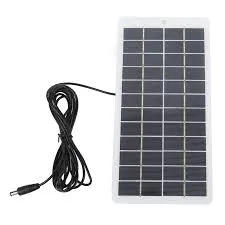Three-Phase Hybrid Inverter Solutions for Enhanced Energy Efficiency and Flexibility
Understanding Three-Phase Hybrid Inverters
In recent years, the push for renewable energy has led to significant advancements in solar technology. One of the key innovations in this field is the three-phase hybrid inverter, a device that plays a crucial role in the integration of solar energy systems with the electrical grid. This article will delve into the functioning, advantages, and applications of three-phase hybrid inverters, providing a comprehensive overview of their significance in modern energy solutions.
What is a Three-Phase Hybrid Inverter?
A three-phase hybrid inverter is a sophisticated device that converts direct current (DC) generated from solar panels into alternating current (AC), allowing the electricity to be used in homes and businesses. Unlike traditional inverters, hybrid inverters offer additional functionalities, such as the capability to interact with battery storage systems. This feature allows users to store excess energy generated during peak sunlight hours, which can then be utilized during times of low generation or high demand.
The term three-phase refers to the type of electrical system used, which is prevalent in commercial and industrial settings. In a three-phase system, three alternating currents are generated, offset by 120 degrees, allowing for a more efficient and stable power supply. Hybrid inverters can manage all three phases simultaneously, ensuring a balanced distribution of electricity.
How Does a Three-Phase Hybrid Inverter Work?
The operation of a three-phase hybrid inverter involves several key processes
1. DC to AC Conversion The inverter first converts the DC electricity produced by solar panels into AC power, which is necessary for most electrical appliances and systems. 2. Energy Management The hybrid inverter can manage the flow of electricity between the solar panels, the battery storage system, and the grid. This includes directing surplus energy to the battery for storage or sending it back to the grid, depending on the user's needs and preferences.
3. Battery Integration If equipped with batteries, the inverter allows for energy storage, enabling users to draw electricity from the batteries during peak demand periods or during outages.
4. Monitoring and Control Many three-phase hybrid inverters come with advanced monitoring systems that provide real-time data on energy production and consumption. This feature helps users optimize their energy use and make informed decisions.
three phase hybrid inverter

Advantages of Three-Phase Hybrid Inverters
1. Efficiency Three-phase hybrid inverters are designed to maximize the use of generated solar energy. They can handle higher power loads, making them ideal for industrial and commercial applications.
2. Energy Independence By integrating battery storage, these inverters offer users the ability to store and use their energy, reducing reliance on the grid and lowering electricity costs.
3. Versatility Hybrid inverters can adapt to various energy sources, allowing users to incorporate wind turbines or other renewable energy sources into their systems seamlessly.
4. Grid Interaction These inverters can provide grid stability services, such as frequency and voltage regulation, which are increasingly important as more renewable energy sources are connected to the grid.
5. Improved Reliability With a hybrid inverter system, users have a backup energy source during power outages, enhancing energy security and reliability.
Applications of Three-Phase Hybrid Inverters
Three-phase hybrid inverters are increasingly being utilized across various sectors, from residential to commercial and industrial. In large commercial buildings, these inverters can support significant energy demands, while in industrial settings, they can manage complex energy consumption profiles. Furthermore, as organizations strive for sustainability, the adoption of hybrid inverters in microgrids and community energy systems is on the rise.
In conclusion, three-phase hybrid inverters represent a pivotal advancement in renewable energy technology, offering efficient energy conversion, management, and storage solutions. As the world continues to transition towards sustainable energy practices, understanding and adopting such technologies will be essential for maximizing the potential of renewable resources. With their numerous advantages and growing applications, three-phase hybrid inverters are undoubtedly a key component of the future energy landscape.
-
String Solar Inverter: The High-Efficiency Solution for Smart Solar EnergyNewsJul.14,2025
-
Revolutionizing Rooftop Energy with the Power of the Micro Solar InverterNewsJul.14,2025
-
Power Independence with Smart Off Grid Solar Inverter SolutionsNewsJul.14,2025
-
On Grid Solar Inverter: Powering the Future with Smart Grid IntegrationNewsJul.14,2025
-
Monocrystalline Solar Panels: High-Efficiency Power for the Future of Clean EnergyNewsJul.14,2025
-
Bifacial Solar Panel: A Smarter Investment for Next-Generation Energy SystemsNewsJul.14,2025







